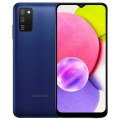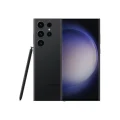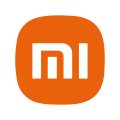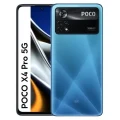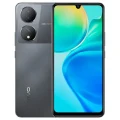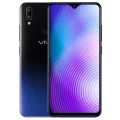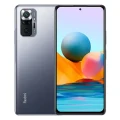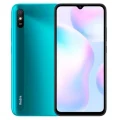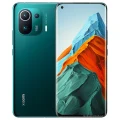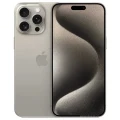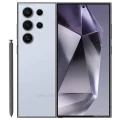- Awesome page
- Latest Mobile
- Smartphones
- Samsung Galaxy S20
Samsung Galaxy S20
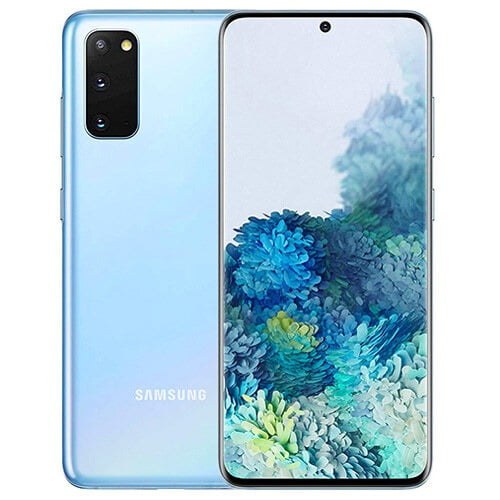

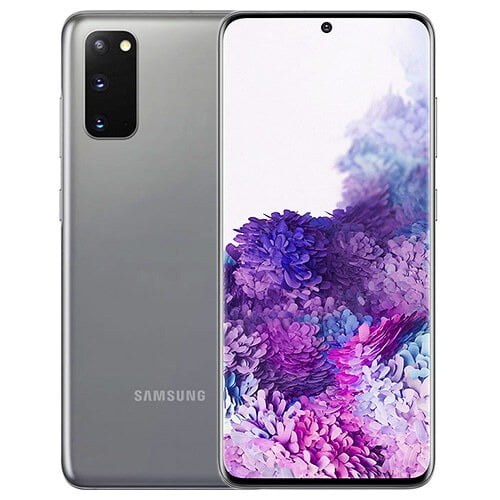

Samsung Galaxy S20 Price in Bangladesh
The 8/128GB Samsung Galaxy S20 model costs BDT 45000 (Unofficial) in Bangladesh. With its triple-camera arrangement, 6.2-inch Dynamic AMOLED display, and 4000mAh battery, this flagship smartphone offers top-notch features and performance.
Specifications
General
| Model | Samsung Galaxy S20 |
| Announced | 11-02-2020 |
| Released | 06-03-2020 |
| Status | Available |
| Unofficial price | Unofficial (8GB+128GB) ৳45,000 |
Design
| Dimensions | 151.7 x 69.1 x 7.9 mm (5.97 x 2.72 x 0.31 in) |
| Weight | 163 g (5.75 oz) |
| Colors |
Cosmic Grey, Cloud Blue, Cloud Pink |
Network
| Technology | GSM / CDMA / HSPA / EVDO / LTE |
| 2G Network |
GSM 850 / 900 / 1800 / 1900 - SIM 1 & SIM 2 (Dual SIM model only) CDMA 800 / 1900 & TD-SCDMA |
| 3G Network |
HSDPA 850 / 900 / 1900 / 2100 HSDPA 850 / 900 / 1700(AWS) / 1900 / 2100 CDMA2000 1xEV-DO |
| 4G Network | LTE band 1(2100), 2(1900), 3(1800), 4(1700/2100), 5(850), 7(2600), 8(900), 12(700), 13(700), 17(700), 18(800), 19(800), 20(800), 25(1900), 26(850), 28(700), 32(1500), 38(2600), 39(1900), 40(2300), 41(2500), 66(1700/2100) |
| GPRS <strong>GPRS</strong> (General Packet Radio Service) is a packet oriented mobile data service on the 2G and 3G cellular communication system's global system for mobile communications (GSM), Generally, GPRS is used for the purpose of wireless data transfer, such as sharing pictures and videos or browsing the Internet via a mobile phone connection. | |
| EDGE <strong>EDGE</strong> (Enhanced Data GSM Environment) is a wireless network technology generally considered the next step in the 2G network offers data transfer rates up to four times faster than ordinary GSM networks, Generally, EDGE is used for the purpose of wireless data transfer, such as sharing pictures and videos or browsing the Internet via a mobile phone connection. | |
| Speed | HSPA 42.2/5.76 Mbps, LTE-A (7CA) Cat20 2000/200 Mbps |
Display
| Display Type <strong>Display Technology => </strong> A number of display technologies and types used in mobile phones => TFT (Thin Film Transistor), IPS (In-Place Switching), OLED (Organic Light Emitting Diode), AMOLED (Active-Matrix Organic Light-Emitting Diode), Super AMOLED (an even advanced version of AMOLED), Resistive Touchscreen (Resistive touchscreens contain two layer of conductive material with a very small gap between them which acts as a resistance), Capacitive Touchsceen (Capacitive touchscreen technology consists of a layer of glass coated with a transparent conductor) | Dynamic AMOLED 2X capacitive touchscreen, 16M colors |
| Size | 6.2 inches, 93.8 cm2 (~89.5% screen-to-body ratio) |
| Resolution | 1440 x 3200 pixels, 20:9 ratio (~563 ppi density) |
| Features |
Corning Gorilla Glass 6HDR10+Always-on display120Hz (up to FHD resolution) |
Camera
Main camera
| Camera Setup | Triple |
| Primary <strong>Camera</strong> is able to capture photographs and usually videos, The most important characteristics of a camera are the resolution (measured in megapixels), lens focus type (fixed or automatic), higher megapixel cameras are known to capture higher quality photos, but not always a good measurement of the photos quality. |
12 MP, f/1.8, 26mm (wide), Dual Pixel PDAF, OIS 64 MP, f/2.0, (telephoto), PDAF, OIS, 3x hybrid optical zoom 12 MP, f/2.2, 13mm (ultrawide), AF, Super Steady video |
| Features |
LED flash, auto-HDR, panorama Dual video call, Auto-HDR |
| Video | 3240p@30fps, 2160p@30/60fps, 1080p@30/60/240fps, HDR10+, dual-video rec., stereo sound rec., gyro-EIS & OIS 2160p@30/60fps, 1080p@30fps |
Selfie camera
| Camera Setup | Single |
| Primary <strong>Camera</strong> is able to capture photographs and usually videos, The most important characteristics of a camera are the resolution (measured in megapixels), lens focus type (fixed or automatic), higher megapixel cameras are known to capture higher quality photos, but not always a good measurement of the photos quality. |
10 MP, f/2.2, 26mm (wide), 1/3.2", 1.22µm, Dual Pixel PDAF |
| Features |
Dual video call, Auto-HDR |
| Video | 2160p@30/60fps, 1080p@30fps |
Hardware
| Chipset <strong>Chipset</strong> is a group of integrated circuits designed to perform one or a more dedicated functions, often with real time computing constraints, Popular smartphones are equipped with more advanced embedded chipsets that can do many different tasks depending on their programming. | Exynos 990 (7 nm+) - Global Qualcomm SM8250 Snapdragon 865 (7 nm+) - USA |
| CPU <strong>CPU</strong> (Central Processing Unit) mostly known as processors, CPU processes instructions in order to carry out certain functions that make your device operate properly. Processors are often described as the brain of computers, smartphones and tablets, Smartphones and tablets rely on processors to carry out their every task, Processors are an incredibly important factor in selecting any type of computing device, including your smartphone. | Octa-core (2x2.73 GHz Mongoose M5 & 2x2.60 GHz Cortex-A76 & 4x2.0 GHz Cortex-A55) - Global Octa-core (1x2.84 GHz Kryo 585 & 3x2.42 GHz Kryo 585 & 4x1.8 GHz Kryo 585) - USA |
| GPU <strong>GPU</strong> (Graphics Processing Unit) is a single-chip processor designed to rapidly manipulate and alter memory to accelerate the creation of images in a frame buffer intended for output to a display, This includes things such as lighting effects, object transformations, and 3D motion. | Mali-G77 MP11 - Global Adreno 650 - USA |
| RAM (Memory) <strong>RAM</strong> (Random Access Memory) is a type of computer memory that can be accessed randomly, any byte of memory can be accessed without touching the preceding bytes that allows information to be stored and accessed quickly from random locations. RAM is the most common type of memory found in computer systems, smartphones, tablets and other electronic devices. | 8 GB |
| Internal Storage <strong>Internal Storage</strong> is a data storage space (flash memory) mostly used in smartphones, tablets and other electronic devices where operating system, apps, music, photos, videos, files and other user data Is stored. | 128 GB |
| Sensors <strong>Sensors</strong> are electronic components that detects and responds to some type of input from the physical environment. The specific input could be light, heat, motion, moisture, pressure and location, The output is generally a signal that is converted to use in computing systems, a location sensor, such as a GPS receiver is able to detect current location of your electronic device. |
Fingerprint (under display, ultrasonic), accelerometer, gyro, proximity, compass, barometer ANT+ Bixby natural language commands and dictation Samsung DeX (desktop experience support) |
Connectivity
| Bluetooth <strong>Bluetooth</strong> is a wireless communications technology for exchanging data between mobile phones, headsets, computers and other network devices over short distances without wires, Bluetooth technology was primarily designed to support simple wireless networking of personal consumer devices. | 5.0, A2DP, LE, aptX |
| Infrared <strong>Infrared</strong> connectivity is an old wireless technology used to connect two electronic devices. It uses a beam of infrared light to transmit information and so requires direct line of sight and operates only at close range. | |
| USB | 3.2, Type-C 1.0 reversible connector |
| GPS <strong>GPS</strong> The Global Positioning System is a satellite-based radio navigation system, GPS permits users to determine their position, velocity and the time 24 hours a day, in all weather, anywhere in the world, In order to locate your position, your device or GPS receiver must have a clear view of the sky. | Yes, with A-GPS, GLONASS, BDS, GALILEO |
| NFC <strong>NFC</strong> (Near field communication) is a set of standards for smartphones and similar devices to establish peer-to-peer radio communications with each other by touching them together or bringing them into proximity, usually no more than a few inches. |
Battery
| Battery Type <strong>Battery Type => </strong> Cell phones run on various kinds of batteries depending on the manufacturer, phone size or shape and features. There are basically four types of cell phone batteries => Lithium Polymer, Lithium Ion, Nickel Metal Hydride and Nickel Cadmium. | Non-Removable Li-Po |
| Capacity <strong>Battery Capacity</strong> is a measure (typically in Amp-hr) of the charge stored by the battery, and is determined by the mass of active material contained in the battery. The battery capacity represents the maximum amount of energy that can be extracted from the battery under certain conditions. | 4000 mAh |
| Charging Charging | Fast battery charging 25W USB Power Delivery 3.0 Fast Qi/PMA wireless charging 15W Power bank/Reverse wireless charging 9W |
Exploring the Innovation of the Samsung Galaxy S20
In the rapidly evolving world of smartphones, the Samsung Galaxy S20 stands out as a beacon of innovation and technological advancement. This device is not just another iteration in Samsung’s lineup; it’s a testament to the brand’s commitment to pushing boundaries. For tech enthusiasts, smartphone users, and Samsung fans alike, the Galaxy S20 offers a blend of features that warrant a closer look. In this comprehensive review, we’ll dissect what makes the Samsung Galaxy S20 a noteworthy contender in the smartphone market, from its cutting-edge camera capabilities to its sleek design and powerful performance.
Introduction to the Samsung Galaxy S20
The Samsung Galaxy series has long been synonymous with innovation and quality. Introduced as part of Samsung’s flagship lineup, the Galaxy S20 continues this tradition, encapsulating years of technological advancements. Launched in 2020, the S20 series marked a significant leap in mobile technology, offering users features that were, at the time, ahead of the curve. From its inception, the Galaxy S series has captivated audiences with its dedication to enhancing user experience and setting new standards in the smartphone industry.
The S20 is more than just a phone; it’s a statement of what modern technology can achieve. With its introduction, Samsung aimed to address the growing demands for better camera quality, enhanced processing power, and longer battery life. The S20’s design reflects these goals, boasting a sleek and modern aesthetic that’s both functional and stylish. Its release was a pivotal moment for Samsung, solidifying its position as a leader in the global smartphone market.
For tech enthusiasts and everyday smartphone users, the Galaxy S20 offers a unique blend of features that appeal to both camps. Whether you’re a fan of Samsung’s ecosystem or simply looking for a reliable and high-performing device, the S20 promises to deliver on multiple fronts. In the sections that follow, we’ll break down the key features of this impressive device and provide insights into its real-world application.
Camera Quality and Capabilities
One of the standout features of the Samsung Galaxy S20 is its camera system. Samsung has consistently pushed the envelope in smartphone photography, and the S20 is no exception. With a triple-lens setup that includes a 12 MP ultra-wide, 12 MP wide, and 64 MP telephoto lens, the S20 offers versatility and clarity for any photography enthusiast. The inclusion of advanced features such as 30x Space Zoom and 8K video recording sets the S20 apart from its competitors.
In practical use, the S20’s camera capabilities shine through. Whether capturing stunning landscapes or detailed portraits, the camera delivers crisp, vibrant images with remarkable detail. Low-light performance is equally impressive, thanks to Samsung’s advanced Night Mode, which ensures clear and bright photos even in challenging lighting conditions. For those who love creating video content, the ability to shoot in 8K provides unrivaled quality that can be noticed on larger screens.
Beyond the hardware, Samsung’s software enhancements play a crucial role in elevating the camera experience. Features like Single Take allow users to capture multiple types of photos and videos with a single press of the shutter button, offering unparalleled flexibility in capturing moments. This combination of hardware and software makes the Galaxy S20’s camera system one of the best available, appealing to both professional photographers and casual users alike.
Display, Size, and Design
Visually, the Samsung Galaxy S20 is a feast for the eyes. Its 6.2-inch Dynamic AMOLED display boasts a resolution of 3200 x 1440 pixels, delivering stunning visuals with vivid colors and deep contrasts. The display supports a 120Hz refresh rate, providing ultra-smooth scrolling and gaming experiences that are a joy to behold. This high refresh rate is particularly beneficial for gamers and media consumers who demand fluid and responsive interactions.
The S20’s design is sleek and modern, characterized by its minimal bezels and premium glass construction. It feels comfortable in hand, striking a balance between size and usability. Samsung offers the S20 in a range of colors, allowing users to choose a style that best fits their personality. The overall build quality is top-notch, underscoring Samsung’s attention to detail and commitment to crafting devices that are as durable as they are beautiful.
For users who prioritize both aesthetics and functionality, the Galaxy S20 hits the mark. Its design not only looks great but also integrates practical features such as an in-display fingerprint sensor for added security. The combination of design and technological advancements in the display makes the S20 a standout device in an increasingly competitive market.
Performance and Battery Life
Under the hood, the Samsung Galaxy S20 is powered by the Exynos 990 processor (or Snapdragon 865, depending on the region), ensuring rapid performance and efficient multitasking. Whether you’re switching between apps, playing graphic-intensive games, or streaming content, the S20 handles it all with ease. The inclusion of 5G connectivity further future-proofs the device, offering lightning-fast internet speeds where available.
Battery life is another crucial aspect where the S20 excels. Equipped with a 4000mAh battery, the phone provides ample power to get through a full day of heavy usage. Samsung’s adaptive power-saving mode intelligently manages resources, extending battery life when needed. Additionally, the S20 supports fast charging, wireless charging, and reverse wireless charging, giving users flexibility in how they power up their devices.
The S20’s performance and battery capabilities make it a reliable companion for users who demand more from their smartphones. Whether you’re a power user or someone who values longevity, the S20’s blend of speed and efficiency ensures you won’t be left wanting. It’s a device built to keep up with the fast-paced demands of modern life.
User Interface and Special Features
Samsung’s One UI provides the Galaxy S20 with a clean and intuitive user interface that enhances the overall user experience. Built on Android, One UI offers a range of customization options, allowing users to tailor the phone’s appearance and functionality to their preferences. Features like Dark Mode and Edge Panels provide added convenience, making navigation effortless and visually pleasing.
Special features set the S20 apart from the pack, offering users unique tools that enhance day-to-day usage. Bixby, Samsung’s AI assistant, offers voice control for various functions, while Samsung DeX provides a desktop-like experience by connecting the phone to a monitor. These features, combined with Samsung’s ecosystem of apps and services, create a seamless integration that benefits users who rely on their smartphones for both work and play.
For tech enthusiasts and Samsung loyalists, the S20’s user interface and special features offer a rich and engaging experience. It’s a device designed to adapt to your needs, providing tools and features that complement and enhance your daily routine. Whether you’re organizing your schedule, managing tasks, or enjoying multimedia content, the S20 supports your lifestyle with ease.
Comparison with Previous Samsung Models and Competitors’ Devices
In terms of innovation, the Samsung Galaxy S20 represents a significant leap from its predecessors. Compared to the Galaxy S10, the S20 offers improved camera capabilities, a higher refresh rate display, and enhanced performance thanks to its upgraded processor. These advancements make the S20 a compelling choice for users looking to upgrade from previous models.
When compared to competitors, the S20 holds its own against devices like the iPhone 11 Pro and Google Pixel 4. Each phone offers unique strengths, but the S20’s combination of camera quality, performance, and display technology gives it a distinct edge. While Apple and Google offer strong contenders in the smartphone market, Samsung’s attention to detail and innovation ensures the S20 remains a top choice for discerning consumers.
For those deciding between the S20 and other flagship devices, the decision often comes down to personal preference and brand loyalty. However, the S20’s comprehensive feature set and competitive pricing make it a worthy investment for anyone seeking a high-quality smartphone experience.
Real-World User Experience
Hearing from actual users provides valuable insights into the Samsung Galaxy S20’s performance in real-world scenarios. Many tech enthusiasts and Samsung fans praise the device for its impressive camera capabilities, noting the clarity and quality of photos even in challenging lighting conditions. Users appreciate the smoothness of the 120Hz display, highlighting its impact on gaming and general usability.
Feedback on battery life is equally positive, with many users reporting a full day’s use without needing a recharge. The device’s design and build quality are also frequently mentioned, with users appreciating the premium feel and aesthetic appeal. Samsung’s commitment to delivering a high-quality product is evident in these user experiences, reinforcing the S20’s status as a top-tier smartphone.
For prospective buyers, these real-world insights provide reassurance that the S20 lives up to its promises. The positive experiences shared by current owners underscore the value and reliability of the device, making it an attractive choice for those in the market for a new smartphone.
Analysis of Pricing and Value for Money
When evaluating the Samsung Galaxy S20, pricing and value for money are crucial factors to consider. Priced competitively within the premium smartphone segment, the S20 offers a range of features that justify its cost. The high-quality camera system, stunning display, and robust performance make it a worthy investment for tech enthusiasts and everyday users alike.
While some may find the price point steep, it’s important to consider the long-term benefits and capabilities of the device. The S20’s features and performance ensure it will remain relevant and functional for years to come, providing excellent value over its lifespan. For those who prioritize cutting-edge technology and reliability, the S20 offers a compelling package.
For budget-conscious consumers, it’s worth exploring financing options and trade-in programs that Samsung often provides. These options can make the S20 more accessible, allowing users to enjoy its benefits without breaking the bank. Ultimately, the S20’s value lies in its ability to deliver a premium experience that meets the needs of a diverse user base.
Future of the Galaxy S20 Line
Looking ahead, the future of the Galaxy S20 line promises exciting developments. With the anticipated release of the Galaxy S21, Samsung is expected to build upon the strengths of the S20 while introducing new features and enhancements. Rumors suggest improvements in processing power, camera capabilities, and even more refined design elements.
For Samsung fans and tech enthusiasts, the S21 represents an opportunity to experience the next level of innovation in the Galaxy series. While specific details remain speculative, Samsung’s track record of innovation and excellence suggests that the S21 will continue to set high standards in the smartphone industry.
For those considering the S20, the arrival of the S21 may bring about price adjustments, making the S20 an even more attractive option. Whether you choose to wait for the S21 or opt for the S20 now, Samsung’s commitment to quality ensures a rewarding experience regardless of the model.
Conclusion
In conclusion, the Samsung Galaxy S20 stands as a testament to Samsung’s dedication to innovation and quality. From its impressive camera system to its sleek design and powerful performance, the S20 offers a comprehensive smartphone experience that caters to a wide range of users. Whether you’re a tech enthusiast seeking the latest advancements or a Samsung fan looking for reliability, the S20 delivers on all fronts.
The insights shared in this review highlight the many strengths of the S20, from its real-world performance to its value for money. For those considering a new smartphone, the S20 offers a compelling package that is both future-proof and versatile. With the anticipated arrival of the S21, now is an excellent time to explore the possibilities the S20 has to offer.
We invite you to share your own experiences with the Samsung Galaxy S20 in the comments below. Your insights and feedback are invaluable in helping others make informed decisions. Whether you’re a longtime Samsung user or new to the brand, we look forward to hearing your thoughts on this remarkable device.
